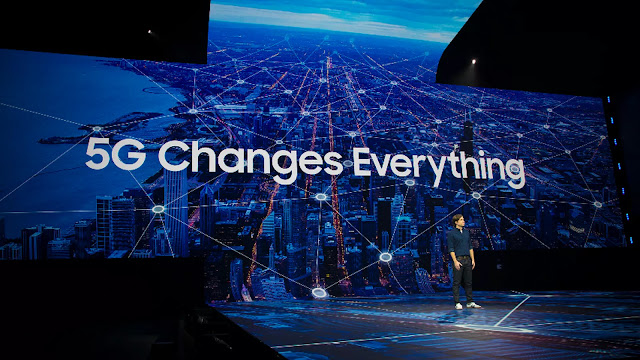What is 5G?
Information
is usually transmitted in various forms – over wire, radio, optical or other
electromagnetic systems. Over a period of time, transmitting information has
changed drastically. The current technology used for information transmission
is 5G – Fifth Generation. This is the upgrade of currently existing 4G
technology.
 |
| Image source: Google |
History
of 5G:
The next
generation in cellular technology is 5G, which was started at the end of 2018.
On 3rd April 2019, 5G mobile services were introduced in Chicago and
Minneapolis. This was the first time in the world that a 5G enabled smartphone
was connected to a 5G network.
Verizon is
the leading company that developed, established and accelerated 5G innovation
in the initial stages. In 2015, Verizon created 5G Technology Forum (5GTF),
which helped to accelerate the release of the Third Generation Partnership
Project (3GPP) 5G New Radio (NR) standard in December 2017. Later, Verizon
introduced a number of 5G phones, including Samsung Galaxy S10 5G, Galaxy Note
10+ 5G, LG V50 among others.
Technical
aspects of 5G:
5G
initially used high frequency spectrum known as millimeter wave spectrum. In 5G
there exists labels like in Verizon 5G UW (Ultra-Wide) where signals are using
millimeter wave, and in AT&T (American Telephone and Telegraph Company)
called 5G Plus.
In 5G there
are low band, mid band, and millimeter wave air waves. Low band 5G provides
best coverage but speeds are not much better. Millimeter wave provides higher
frequency range and speed is good up to 1Gbps, but the range is short and that
it doesn’t cover indoors. Mid band as the name implies it offers faster speed
than low band while it has better coverage than millimeter wave.
5G vs 4G:
- 5G is superior to 4G. 4G was built upon data and application technology introduced by 3G in early 2000s. 5G provides high reliability and ultrafast speed than that of 4G.
- 4G LTE (Long Term Evolution) technology is only capable of using lower frequency bands up to 6GHz, whereas in 5G radio bands will handle up to 30 GHz and 300 GHz.
- 5G support massive data transfers. 5G can reach speeds up to 20 times faster than 4G LTE. 4G LTE has a peak speed of 1GB per second while 5G can achieve speeds of 20 GB per second.
- 5G have capacity to handle up to a million devices per square kilometer. In 4G competing bandwidth results in slow network connectivity.
- 5G has better efficiency than 4G. Better efficiency means it wastes less power. 5G has better mobility than 4G.
 |
| Image source: Google |
Before 5G:
Every generation of wireless communication standard has brought improvements of technology. 1G is first generation of wireless telephone technology. These are analog telecommunication standards. 1G was introduced in 1979. 2G (Second Generation) was introduced in mid-1980’s. These are digital telecommunications. Speed of 2G is 14.4 kbps.
2G provides services such as text messages, picture messages, multimedia message services. 3G technology introduced in 1998. This technology provides an information transfer of at least 144 k bit/sec. CDMA2000 is a family of 3G mobile technology standards for sending voice, data and signaling data between mobile phones and cell sites.
4G technology was
introduced in 2009 in Norway and Stockholm and in United States in 2011 with
700 MHz band. Applications of 4G are mobile web access, IP telephony, gaming
services, high definition mobile TV, video conferencing, 3D television, and
cloud computing.
 |
| Image source: Google |
Benefits
of 5G:
- 5G greatly enhances the speed, coverage and responsiveness of wireless networks.
- 5G speed range is up to 1 Gbps (10 to 100 times speedier than our typically cellular connection)
- Low Latency up to 1 millisecond. (Latency is the response time that delay between sending and receiving of information)
- 1000x bandwidth per unit area, 99.99% availability and 100% coverage.
Conclusion:
In
conclusion, 5G is one of the biggest technological information for our lifetime
with unlimited possibilities. 5G can change everything.











0 comments:
Post a Comment